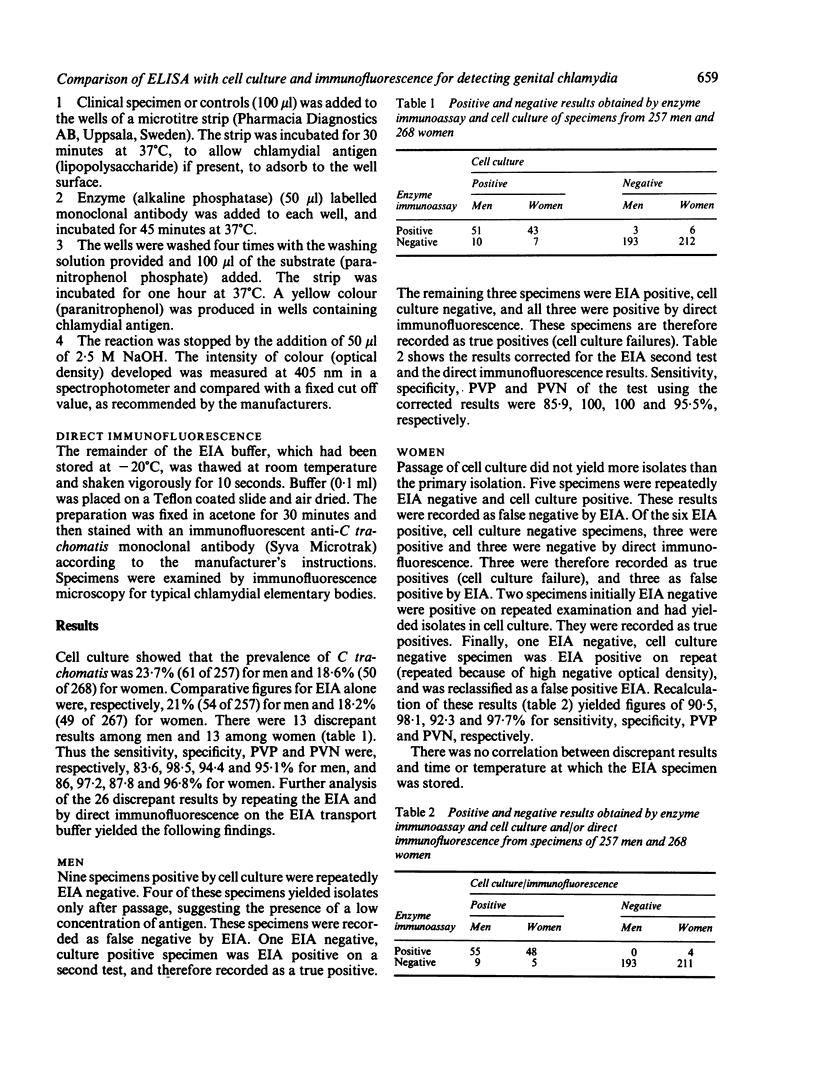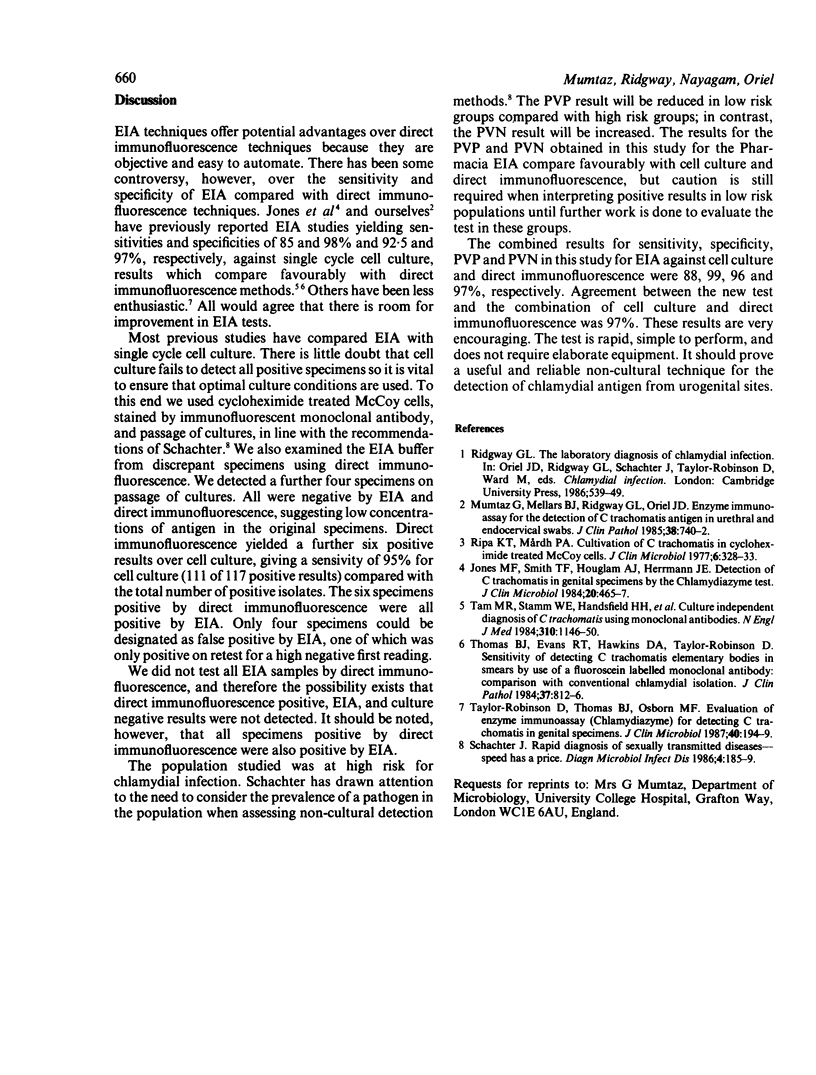Abstract
A novel enzyme immunoassay test (Pharmacia EIA) was evaluated against cell culture for the detection of chlamydial genital infection. Specimens were obtained from 525 patients (257 men and 268 women). Sensitivity, specificity, predictive value of positive (PVP) and predictive value of negative (PVN) for the new test were, respectively, 83.6, 98.5, 94.4 and 95.1% for men and 86, 97.2, 87.8 and 96.8% for women. Discrepancies were further evaluated by repeating the EIA, and by direct immunofluorescence on the EIA transport buffer. The sensitivity, specificity, PVP and PVN of the EIA against the combination of cell culture and direct immunofluorescence were, respectively 85.9, 100, 100, and 95.5% for men, and 90.5, 98.1, 92.3 and 97.7% for women. Overall agreement between the EIA and the combination of cell culture and direct immunofluorescence was 97%. The Pharmacia EIA is rapid and simple to perform and does not require elaborate equipment.
Full text
PDF


Selected References
These references are in PubMed. This may not be the complete list of references from this article.
- Jones M. F., Smith T. F., Houglum A. J., Herrmann J. E. Detection of Chlamydia trachomatis in genital specimens by the Chlamydiazyme test. J Clin Microbiol. 1984 Sep;20(3):465–467. doi: 10.1128/jcm.20.3.465-467.1984. [DOI] [PMC free article] [PubMed] [Google Scholar]
- Mumtaz G., Mellars B. J., Ridgway G. L., Oriel J. D. Enzyme immunoassay for the detection of Chlamydia trachomatis antigen in urethral and endocervical swabs. J Clin Pathol. 1985 Jul;38(7):740–742. doi: 10.1136/jcp.38.7.740. [DOI] [PMC free article] [PubMed] [Google Scholar]
- Ripa K. T., Mårdh P. A. Cultivation of Chlamydia trachomatis in cycloheximide-treated mccoy cells. J Clin Microbiol. 1977 Oct;6(4):328–331. doi: 10.1128/jcm.6.4.328-331.1977. [DOI] [PMC free article] [PubMed] [Google Scholar]
- Schachter J. Rapid diagnosis of sexually transmitted diseases--speed has a price. Diagn Microbiol Infect Dis. 1986 Mar;4(3):185–189. doi: 10.1016/0732-8893(86)90097-0. [DOI] [PubMed] [Google Scholar]
- Tam M. R., Stamm W. E., Handsfield H. H., Stephens R., Kuo C. C., Holmes K. K., Ditzenberger K., Krieger M., Nowinski R. C. Culture-independent diagnosis of Chlamydia trachomatis using monoclonal antibodies. N Engl J Med. 1984 May 3;310(18):1146–1150. doi: 10.1056/NEJM198405033101803. [DOI] [PubMed] [Google Scholar]
- Taylor-Robinson D., Thomas B. J., Osborn M. F. Evaluation of enzyme immunoassay (Chlamydiazyme) for detecting Chlamydia trachomatis in genital tract specimens. J Clin Pathol. 1987 Feb;40(2):194–199. doi: 10.1136/jcp.40.2.194. [DOI] [PMC free article] [PubMed] [Google Scholar]
- Thomas B. J., Evans R. T., Hawkins D. A., Taylor-Robinson D. Sensitivity of detecting Chlamydia trachomatis elementary bodies in smears by use of a fluorescein labelled monoclonal antibody: comparison with conventional chlamydial isolation. J Clin Pathol. 1984 Jul;37(7):812–816. doi: 10.1136/jcp.37.7.812. [DOI] [PMC free article] [PubMed] [Google Scholar]


